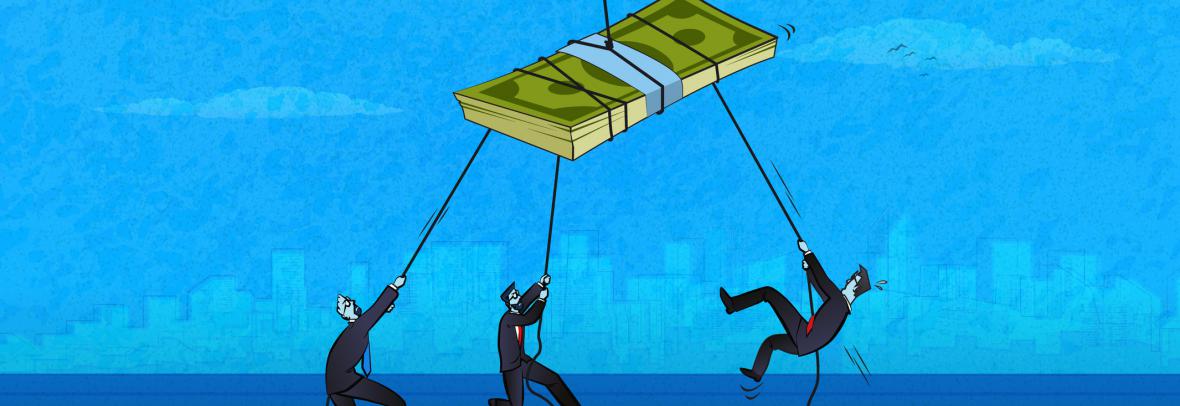
The economy and RE market will improve if inflation is under control, and it’s dropping each month – but at a slower pace than the Fed would like to see.
WASHINGTON (AP) – Measures of U.S. inflation barely declined in September, evidence that consumer price increases are grinding lower at a gradual pace.
Consumer prices rose 0.4% from August to September, below the previous month’s 0.6% pace. Thursday’s report from the Labor Department also showed that year-over-year inflation was unchanged last month from a 3.7% rise in August.
And underlying inflation declined a bit: So-called core prices, which exclude volatile food and energy costs, climbed 4.1% in September from a year earlier, down from a 4.3% pace in August. That is the smallest such increase in two years. Economists pay particularly close attention to core prices because they provide a good signal of inflation’s likely future path.
Still, on a month-to-month basis, prices are continuing to rise faster than is consistent with the Federal Reserve’s 2% target. Core prices increased 0.3% from August to September, the same as in the previous month.
The report “was a mixed bag,” said Laura Rosner-Warburton, senior economist at MacroPolicy Perspectives, a forecasting firm. “It still suggests that we have exited the higher inflation regime of the pandemic, but we’re still elevated.”
Thursday’s inflation data is unlikely to change the Fed’s outlook, Rosner-Warburton said, because the central bank already expected only a gradual decline in inflation.
“I don’t think this was an upside surprise to the Fed,” she said. “This is probably in line with what they were expecting.”
Rosner-Warburton, like most economists, expects Fed officials to keep their key interest rate unchanged at their next meeting in three weeks, which would leave it at a 22-year high of 5.4%.
At the same time, the policymakers will likely “keep the door open to more hikes in the future,” she said, including at their following meeting in December.
The main driver of last month’s inflation was an uptick in housing costs. Rental prices and a measure that the government computes of the cost of homeownership, which together make up about a third of the total inflation index, accounted for most of overall inflation from August to September. Those costs also accounted for more than two-thirds of the increase in core prices compared with a year ago.
Rental prices rose 0.5% on a monthly basis for a second straight month. Measured year over year, rental costs are up 7.4%, down from a 7.8% rise in August.
Rosner-Warburton pointed to an unusual jump in housing prices in Los Angeles as accounting for much of last month’s housing inflation, which may not be sustained. Economists have expected rental price increases to steadily moderate. They note that market measures of rents for newly leased apartments have cooled considerably in the past year as the construction of apartment buildings has jumped. It can take time for a decline in new rents to flow through to the government’s measure.
“We’re somewhat skeptical of the uptick” in September, Rosner-Warburton said.
Hotel prices surged 3.7% just in September after three straight months of declines, and airline fares also rose after a big drop in August.
Higher gas prices helped drive inflation for a second straight month. Those prices rose 2.1% just from August to September, after a 10.6% surge the previous month. Gas prices have since come down; they averaged $3.65 a gallon nationally on Thursday, according to AAA, down from $3.84 a month ago.
Fuel costs, though, remain much higher than pre-pandemic levels and have forced up shipping costs. That has created a burden for small-business people like Sandy Bialek, who owns Fatbat Brewing, a tap room in Hanover, Pennsylvania. Bialek said shipping costs have jumped for the malts that she buys by the pallet-load.
She has had to raise the average price for a beer at her brewery to about $8, from about $6.50, to offset a range of higher costs. Her price increases, she said, have led a few of her regulars to quip, “What are you putting in this beer?”
Many of Bialek’s working-class local customers have cut back on their visits or drink less when they do come by. More of her business is now coming from visitors to the area.
“I think a lot of people are hunkering down and saving and waiting” for inflation to pass, Bialek said. “There’s a lot of uncertainty.”
Copyright 2023 The Associated Press. All rights reserved. This material may not be published, broadcast, rewritten or redistributed without permission.
Go to Source
Author: kerrys



